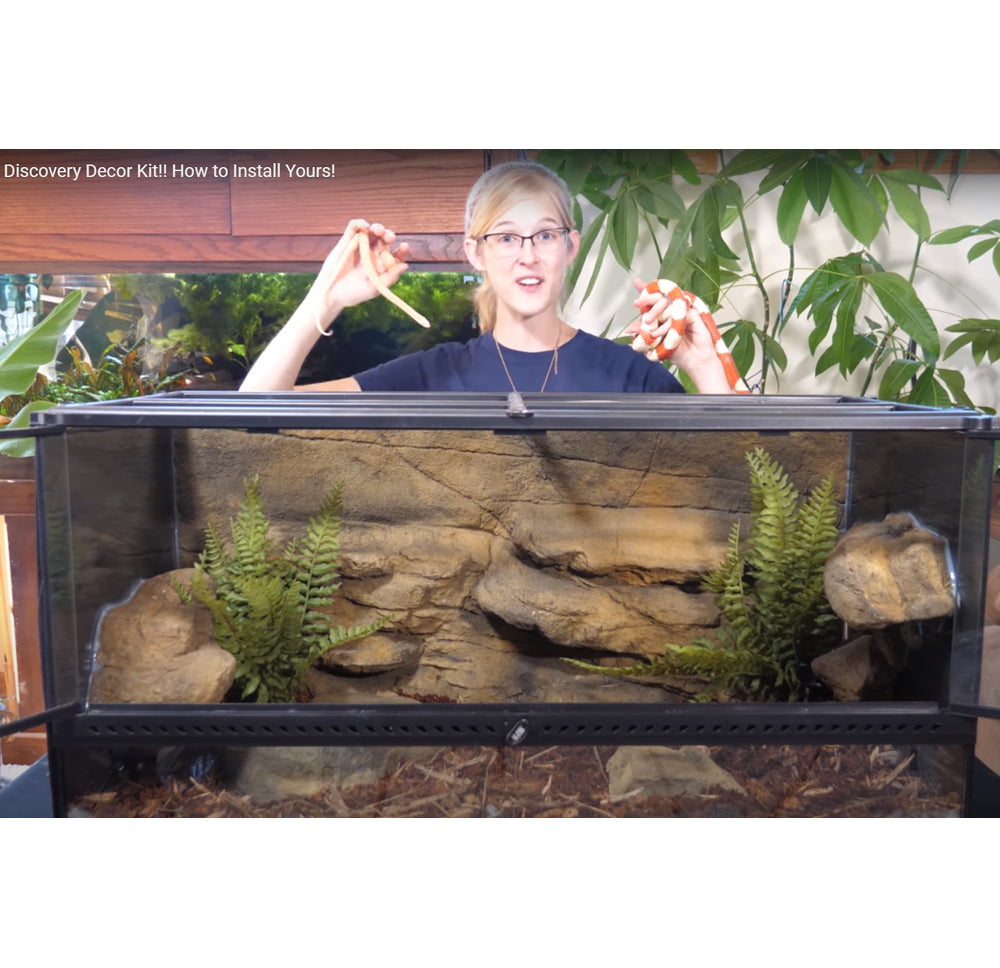Creating the perfect snake enclosure decor is not just about aesthetics; it’s also about ensuring that your pet feels comfortable and secure in its environment. As a long-time snake enthusiast, I’ve learned that the right setup can significantly impact your snake’s well-being. In this comprehensive guide, we’ll dive into the essential aspects of snake enclosure decor, including materials, plants, and tips that will make your reptilian friends thrive.
Understanding the Basics of Snake Enclosure Decor
Before diving into decoration specifics, let’s talk about the fundamental aspects that every snake owner should consider when setting up an enclosure.
What is Enclosure Decor?
Enclosure decor refers to the various elements inside the snake’s habitat, including substrate, hiding spots, climbing structures, and plants. These components create a naturalistic environment that mimics the snake’s wild habitat.
Why is Proper Decor Important?
Proper decor plays a crucial role in your snake’s physical and mental health. An enriched environment reduces stress, encourages natural behaviors, and promotes overall happiness.
Choosing the Right Substrate
Substrate is the material that lines the bottom of the enclosure. It plays a significant role in moisture retention, temperature regulation, and hygiene. Here are some popular substrate options:
| Substrate | Pros | Cons |
|---|---|---|
| Aspen Shavings | Good moisture retention, easy to clean | Can be ingested |
| Coconut Fiber | Naturalistic, retains humidity | Can be dusty when dry |
| Reptile Carpet | Reusable, easy to clean | Limited burrowing options |
| Paper Towels | Cheap, easy to replace | Not naturalistic |

Personal Experience with Substrates
In my experience, using coconut fiber gives my snakes the best comfort level while mimicking their natural environment. It’s essential to find a substrate that works for you and your pet!
Hiding Spots and Climbing Structures
Every snake needs a place to hide. Hiding spots are crucial for their mental health and security. Here are some options to consider:

Types of Hiding Spots
- Commercial Hides: Easily available in pet stores, they come in various shapes and sizes.
- DIY Hides: You can create your own using materials like PVC pipes, cardboard boxes, or logs.
- Natural Hides: Consider using rock caves or driftwood to create a more realistic environment.
Climbing Structures
Many snakes enjoy climbing, so adding branches or other structures can keep them active and engaged. You can use:
- Branches: Securely attach branches to provide climbing opportunities.
- Vines: Artificial vines can be draped around the enclosure for added texture.

Live vs. Artificial Plants
Plants can enhance the aesthetic of your snake’s enclosure while providing benefits like shade and hiding spots. Let’s compare live and artificial plants.
| Type of Plant | Pros | Cons |
|---|---|---|
| Live Plants | Natural beauty, improves air quality | Requires maintenance, risk of pests |
| Artificial Plants | Easy to clean, no maintenance | May not look as realistic, limited benefits |

My Favorite Plants for Snake Enclosures
If you decide to go the live plant route, I recommend snake plants, pothos, or spider plants, as they are hardy and can thrive in various conditions.
Temperature and Humidity Considerations
Snake enclosures should maintain specific temperature and humidity levels that correspond to the species’ natural habitat. Here’s how decor can impact these factors:

Using Decor to Regulate Environment
Decor can help maintain humidity by using natural substrates, such as coconut fiber, or incorporating plants that retain moisture. Additionally, heating elements such as heat mats and lamps must be placed considering the decor structure to create warm and cool areas in the enclosure.
Lighting and its Importance
Proper lighting is crucial for your snake’s health. Depending on the species, UVB lighting may be necessary, impacting decor decisions.

Choosing the Right Lighting
- UVB Lights: Important for diurnal snakes.
- Heat Lamps: To create thermal gradients.
- LED Lights: For night visibility without disturbing the snake’s cycle.
Maintaining a Clean Environment
Regular cleaning of your snake’s enclosure is essential for hygiene and health. Here are some tips:

Cleaning Your Snake Enclosure
Remove waste and uneaten food daily. Deep clean the entire enclosure with reptile-safe disinfectants every two weeks. Regularly change out the substrate and clean decor items as needed.
Common Mistakes to Avoid When Decorating a Snake Enclosure
Even experienced snake owners can make mistakes. Here are some common pitfalls:
Overcrowding the Enclosure
It’s essential to strike a balance between decor and open space. Snakes need room to move and hide without feeling cramped.
Ignoring Species-Specific Needs
Each species has different needs regarding heat, humidity, and decor. Always research your specific snake type before making decor decisions.
Frequently Asked Questions
What is the best substrate for snakes?
The best substrate varies by species, but aspen shavings and coconut fiber are popular choices due to their moisture retention and ease of cleaning.
How can I decorate my snake enclosure affordably?
Use DIY decor ideas, like creating hides from cardboard boxes or using natural branches from outside (after properly cleaning them).
Are live plants safe in a snake enclosure?
Yes, many live plants are safe for snake enclosures, but always verify that the specific types are non-toxic and suitable for your snake’s species.
How often should I clean my snake’s enclosure?
You should spot clean daily and perform a deep clean every two weeks or as necessary, depending on the enclosure’s setup.
Conclusion
Decorating your snake’s enclosure is a rewarding process that can enhance your pet’s quality of life. By considering the specific needs of your snake and incorporating natural elements, you can create an enriching habitat where your serpent can thrive. Remember, a well-decorated enclosure is more than just visually appealing; it provides security, stimulation, and comfort for your snake. Happy decorating!